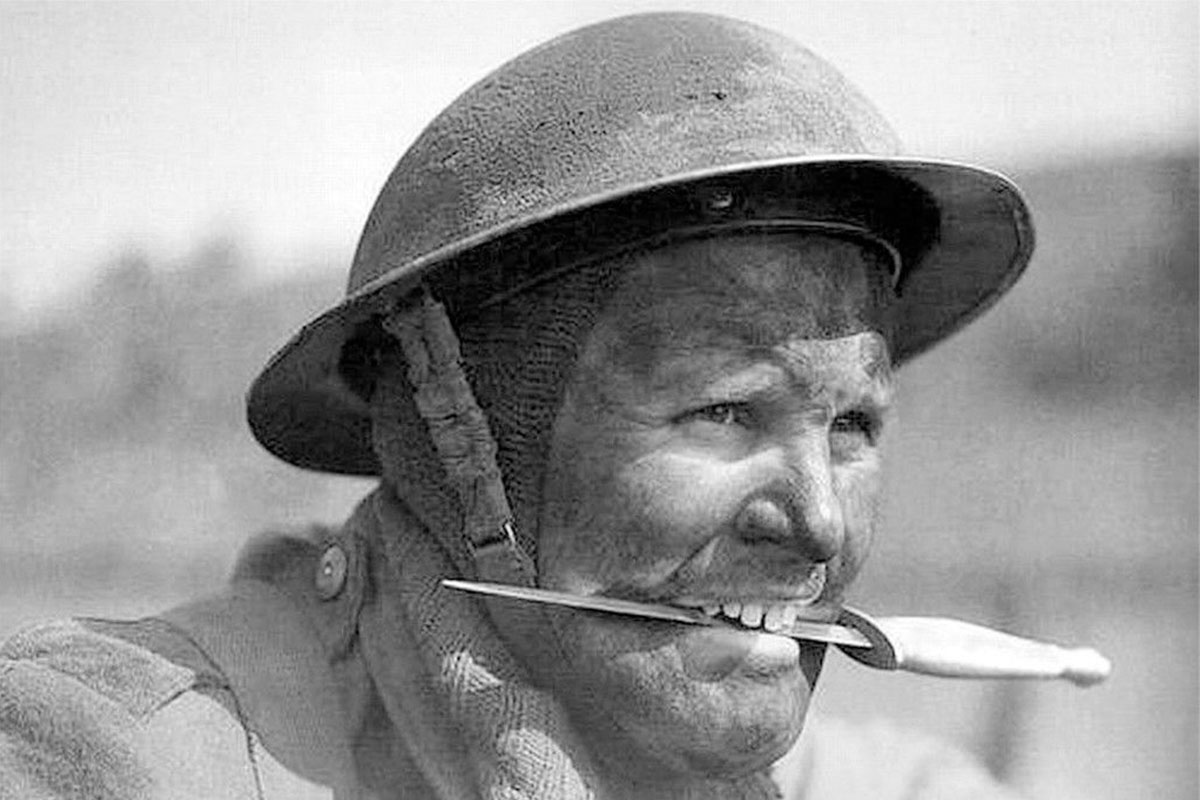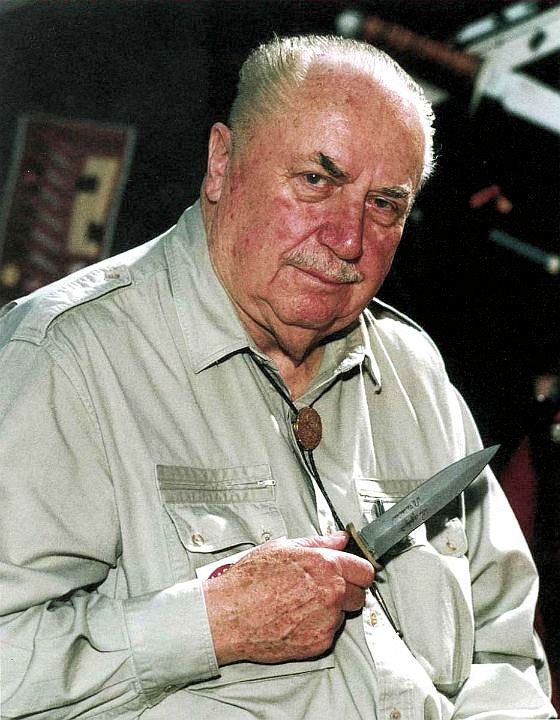A brief history of the Fairbairn-Sykes commando knife
By Matt Fratus
very badass commando needs their own fighting knife. When the battle gets up-close and personal, all the rules are thrown out and it’s anything goes. When a suitable blade doesn’t exist, you get one made. On Nov. 4, 1940, John “Jack” Wilkinson-Latham, Charlie Rose, Lieutenant Colonel William Ewart “Dan” Fairbairn, and Major Eric Anthony “Bill” Sykes met at Wilkinson Sword Co. Ltd. to discuss the prospect of engineering a new combat fighting knife.
Each man brought desirable knowledge in practical concepts to the drawing board. Taking three decades of past experience as a peace officer and firearms instructor for the Shanghai Municipal Police (SMP) in China, then the most violent cop-beat in the world, Fairbairn had the required intangibles to show up for a conversation. He was one of the original members of the world’s first Special Weapons And Tactics (SWAT) teams and had expertise in forensic ballistics. These bullet points in Fairbairn’s life were what allied clandestine units eyeballed. “I was in police work in the Orient for 30 years [1907-1940],” he said. “We had a tough crowd to deal with there so you had to be prepared to beat every trick in the book.”
A bloody fight in an alleyway hospitalized Fairbairn after he was ambushed by goons from a Chinese separatist gang. Covered in bandages after being stabbed over a dozen times and left for dead, he awoke to notice a plaque on the wall that read: “Professor Okada, Jiu-Jitsu and Bone-setting.” He had an epiphany to use Jiu-Jitsu and combine it with other martial arts such as boxing, judo, and wrestling. He called it Defendu and used it to better protect his officers in these types of melees.
Sykes, a special sergeant attached to the sniper unit, was highly respected by Fairbairn. Together they tussled with street thugs in riots and patrolled among the political unrest across the red light districts. In just 12.5 years, they were present during more than 2,000 riots and fights, 666 of which were shootings. They deescalated 200 of them, a remarkable record considering that a mob can turn into a violent riot fairly quickly. This anomaly exposed them to real-world tactics shaped from classroom theory to results-driven practices. The skill to incapacitate called for a specific level of training because killing was the last resort.
From 1927 to 1940, Fairbairn made connections with the 4th Marine Regiment stationed in China; those from the “China Marines” were exposed to his methods in how to kill with a blade. These connections would prove to be effective down the road in his role with the implementation of unarmed combat within the U.S. military and select special operations units.
After retiring from the SMP, the pair returned to the United Kingdom in 1940 and were approached by the Secret Intelligence Service’s (SIS) “Section D” (for destruction) to set up a combatives program for the newly formed Commandos and Special Operations Executive (SOE). Since their November 1940 meeting, it took Rose, the top development engineer at Wilkinson Sword Co. Ltd. Experimental Workshop, 10 days to work out the kinks in the “First Pattern” of the F-S knives. The expedited process ensured a batch of 1,500 daggers would reach schoolhouses across England.
“In modern warfare, the job is more drastic,” said Fairbairn. “You’re interested only in disabling or killing your enemy. That’s why I teach what I call ‘Gutter Fighting.’ There’s no fair play; no rules except one; kill or be killed.” Their nimble design had a long, thin 6.5- to 7-inch blade; the grip was made from solid brass, and the grip handguard was nickel-plated.
Designed for combat applications, the double-edged stiletto could be worn and concealed on the calf of a commando. Its usage was common in the ETO (European Theater of Operations) but saw action among members of SOE’s Force 136, including James Alexander E. MacPherson, who carried it in the Far East.
This lightweight model was then introduced to Lieutenant Colonel Rex Applegate, a counterintelligence officer assigned to the Office of Strategic Services (OSS) instructor cadre. Known for his instruction on “Point Shooting” with handguns and a visionary in combat application, he traveled to the U.K. to witness the commandos training firsthand. He and Fairbairn inspected the field reports of the dagger’s effectiveness on body armor, conducted additional training, and met up with Fairbairn’s then-compatriot Sykes. While Sykes remained in the U.K. instructing his “Silent Killing” course, Fairbairn and him had a disagreement that is rumored to have hurt their relationship.
Applegate and Fairbairn returned to the West to introduce their methods to the Americans at Camp Ritchie, then later at the 275-acre farmland training grounds called STS-3 (Special Training School), or Camp X, in Oshawa, Canada. Camp X opened on Dec. 6, 1941, a day before the attacks on Pearl Harbor. It became an instrumental link between British and American special operations forces who cross-trained before going to war. They eventually made a knife of their own called the Applegate-Fairbairn fighting knife.
The Shanghai connection didn’t stop there. Irishman Dermot “Pat” O’Neill served amongst the SMP, following in his father’s footsteps. As he rose through the ranks, O’Neill earned a fourth dan black belt. His influence was feared — a SWAT cop mingling in the same gyms as Judo students who were trained as spies for the Kempeitai, the Japanese version of the Gestapo. Adding to the heat already upon him was rampant corruption in the SMP, including the chief of detective squad, Lu Liankui. He was a Green Gang boss and disciple of the Ji Yunquing, one of the eight leaders of the Big Eight Mob. O’Neill expected retribution and bailed onto a fishing boat for Sydney; he soon received a telegram from Fairbairn requesting his presence in the United States.
O’Neill weaved his way to Camp X, where Fairbairn utilized his expertise teaching OSS officers. Here he taught students how to sneak up on sentries and eliminate them. He ran the students through real-world scenarios because shooting paper targets on a range and performing hand-to-hand combat drills on dummies wasn’t going to cut it in war. Fairbairn put students through “indoor mystery ranges” (the “shoot houses” or “kill houses” today’s special operations soldiers are familiar with).
“Under varying degrees of light, darkness, and shadows, plus the introduction of sound effects, moving objects, and various alarming surprises,” Fairbairn explained, “an opportunity is afforded to test the moral fiber of the student and to develop his courage and capacity for self control.” The students referred to these tests as the “House of Horrors” for its authenticity.
Fairbairn’s web of connections brought helped spread the Fairbairn-Sykes combat fighting knife around the world, and it has a lineage in many different historical units. When O’Neill left the OSS, he later joined Lt. Col. Robert Frederick’s First Special Service Force (FSSF), commonly referred to as the Devil’s Brigade. The joint U.S.-Canada team learned quickly that O’Neill wasn’t there to teach them how to incapacitate an enemy — he was there to teach them how to kill.
Frederick developed his own knife called the V-42 stiletto. Inspired by the Fairbairn-Sykes fighting knife, Frederick issued his “Cross Dagger” to his commandos. Today, the lineage can be seen in the insignia of the British Special Air Service (SAS), Royal Marines, U.S. Army Special Forces, U.S. Army Rangers, Dutch Commando Corps, and the Australian 2nd Commando Regiment.




